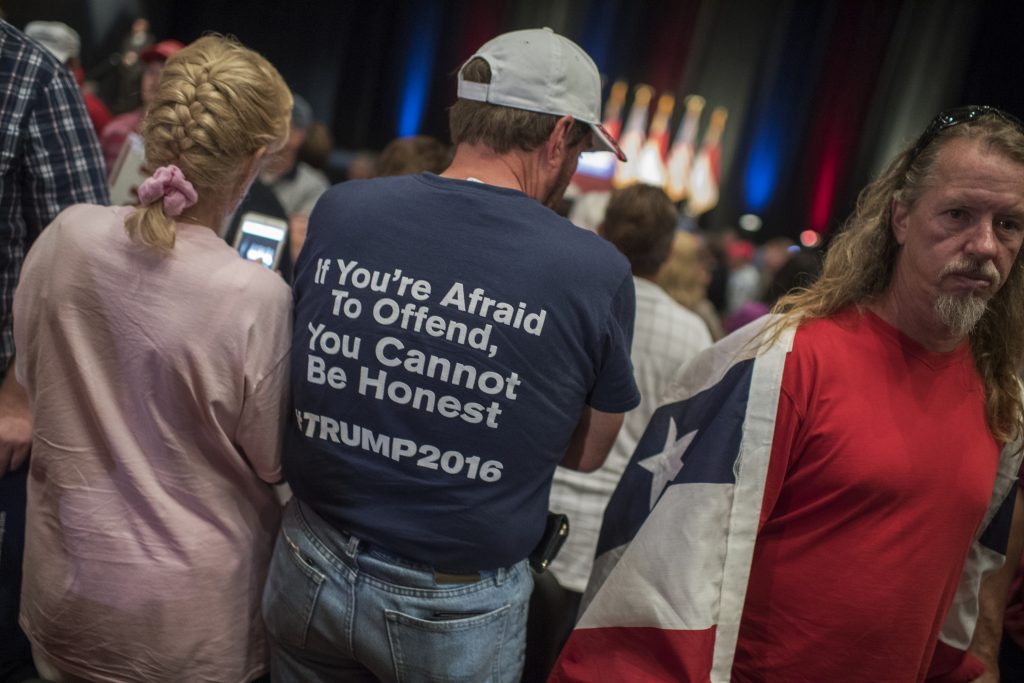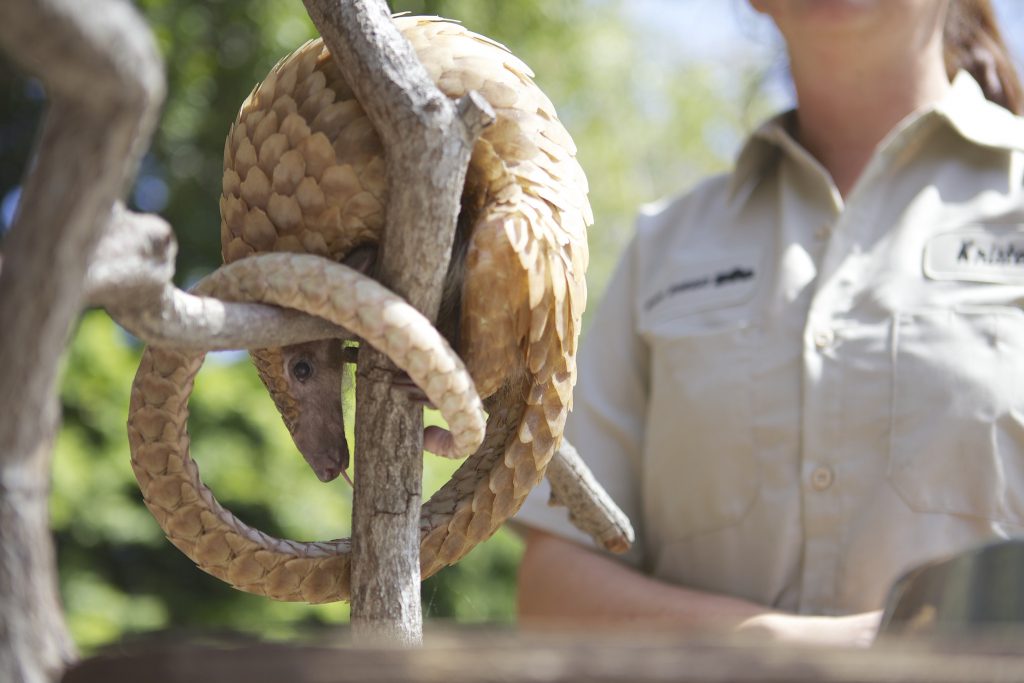The Paradox of Donald Trump’s Appeal

Donald Trump is the most rule-violating candidate this country has seen in decades. Even Barry Goldwater, who some have compared Trump to, was not out for a hostile takeover of his party. Trump repeatedly says and does things that most pundits think should destroy his viability: Many Mexican immigrants “are rapists.” Women who have abortions should be punished. Asked whether he’d publicly reject the support of the former Ku Klux Klan leader David Duke, he said, “I just don’t know anything about him.” None of this has blunted his appeal. An old anthropological theory about religion sheds light on why Trump may be appealing because of his transgressions, and not despite them.
Fifty years ago, British anthropologist Mary Douglas published Purity and Danger, still one of the most remarkable studies on faith ever written. Unlike the early Edwardian anthropologists who were confident of their place atop the ladder of human development, Douglas did not see religion as a simple mistake, a misstep on the triumphant path of progress toward science. “Once when a band of !Kung Bushmen had performed their rain rituals,” she wrote, “a small cloud appeared on the horizon, grew and darkened. Then rain fell. But the anthropologists who asked if the Bushmen reckoned the rite had produced the rain, were laughed out of court. … How naive can we get about the beliefs of others?”
To Douglas, it was clear that the !Kung simultaneously did and did not believe that their rain rituals would work. For her, the core anthropological problem of religion was not false belief: It was to understand how people hold, at one and the same time, the conviction that events will unfold as their faith says they should and an awareness that they might not.
Douglas began with the observation that religion is full of rules—the kinds of rules that Trump violates with such glee—and usually, rule-following is supposed to protect you and keep you safe. She pointed out that the rituals connected with gods, spirits, and ancestors among preindustrial peoples were loaded with taboos—foods the faithful couldn’t eat, things they couldn’t touch, and people they had to avoid.
The ancient Israelites, for example, could not eat what the book of Deuteronomy called “any abominable thing,” beginning with animals that did not both chew their cud and have cloven hooves. Sheep and cattle were acceptable; pigs, rabbits, and camels were not. According to the text, “Their flesh you shall not eat, and their carcass you shall not touch.” Prescriptions about how to behave with corpses, lepers, and widows go on for many verses. The ancient Zoroastrians had an even longer text, the Vendidad, filled with elaborate rules meant to ensure purity. Menstruating women not only had to retreat from the world but also had to sleep on a bed made entirely of iron. Anthropologists found similar codes in numerous human societies.
Many scholars have been tempted to make sense of these long lists of rules as the result of a concern with hygiene. Jews and Muslims were forbidden pork because of the risks of trichinosis; Zoroastrians leave their corpses to be eaten by vultures to keep their people safe from disease.
What we call “dirt” is simply stuff that is out of place in the world as we imagine it should be.
Again, Douglas disagreed. She thought that humans had a deep-seated impulse to order their world and that this imposed order had far less to do with practical necessity than with theology and metaphysics—an insight that came to her, she said, when she realized that her new husband defined as dirt all manner of things she never noticed. “When we honestly reflect on our busy scrubbings and cleanings in this light we know that we are not mainly trying to avoid disease,” she wrote. “We are separating, placing boundaries, making visible statements about the home that we are intending to create out of the material house.” What we call “dirt” is simply stuff that is out of place in the world as we imagine it should be.
From this perspective, ritual acts are not so much about practical efficacy—getting what you pray for—as they are about something more complex and psychologically subtler. They impose upon the world a sense of just order—the sense that if you behave rightly, the world will unfold as it should. What made Douglas’ book so brilliant was her understanding that the order we impose always fails to deliver a just reality. The faith that the world is good, safe, and beautiful is held in a world that is often brutal and unfair. And so, she pointed out, religions sometimes elevate a deeply impure object as a source of divine power. The paradoxical logic goes like this: That which is disorderly is always dangerous, and thus it is powerful; because our attempts to impose a just order fail, that dangerous, rule-violating power can be understood as the force to reset the system.
Douglas illustrated this claim through her ethnography of the African tribe she studied, the Lele of the Kasai, who live in what is now the Congo. In their worldview, the pangolin should have been understood as disgusting and taboo because it violates many Lele expectations about what proper animals should be. (The pangolin is a mammal, but it looks like a lizard. It’s a very odd-looking creature.) Yet Lele cult initiates saw the pangolin as the most sacred of all animals. They believed that the pangolin would wander into the village as a kingly and voluntary sacrifice, and they killed it to eat in rituals to enhance their own fertility. The Lele, Douglas said, had a “composting” religion. “That which is rejected is ploughed back for the renewal of life,” she argued in Purity and Danger.
Douglas was a devout Catholic. Behind the way she imagined the pangolin lay the way she saw Jesus—as dirt made divine. Jesus was a poor man conceived out of wedlock and killed as a common criminal, a man who violated the precepts of his own religion and yet became imagined as the purest embodiment of the sacred. In Christianity, that which is most taboo redeems us.
The anthropological puzzle of Trump is how to make sense of the apparently deep appeal of this most taboo-violating candidate. Many observers ascribe his popularity to the economic frustrations of poorly educated white men who are angry with the immigrants they think have taken away their jobs. Douglas might argue that Trump’s appeal has something to do not only with political anger but also with the religious imagination, so that the qualities that make him seem subhuman to some—his willingness to flout all codes of respectful behavior—make him superhuman to others.
That transcendent quality might also explain why the facts do not seem to matter much to his followers: We are in the domain of faith, not that of reason. Perhaps it even explains why at least some conservative Christians are not disgusted by Trump’s non-Christian behavior. The figure of the disgusting-but-redemptive has a long Christian lineage. It is a stark reminder of the intimate connection between the politics of hatred and those of hope.


































